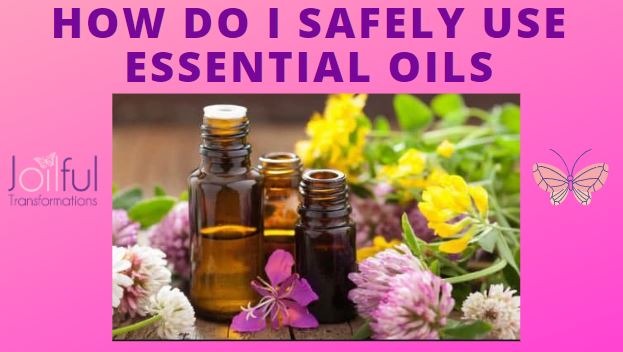
Aromatic
The sense of smell is a tool that can elicit powerful physiologic, mental, and emotional responses. Essential oils are quickly absorbed by the smell receptors, which have a direct link to the limbic system by way of the olfactory nerve. The limbic system is part of the brain that supports a variety of functions including smell, emotions, behavior, and memory. For this reason, essential oils have an especially powerful effect via aromatic application.
Some essential oils induce uplifting or invigorating effects, while others are more calming. Diffusion is one of the simplest methods for using essential oils aromatically. Diffusers that use cold air or water are ideal. However, using essential oils aromatically does not require any special diffusing devices.
You can achieve the same health benefits by simply placing a few drops of essential oil in the palm of your hand that is then cupped around the nose as you breathe deeply.
Additional aromatic uses For Essential Oils Include:
Apply oil to a cotton ball and place in the air vents of your vehicle.
Mix oils in a spray bottle with water and mist over furniture, carpet, or linens.
Add oil to a batch of laundry dryer balls to replace your toxic dryer sheets.
Use in household surface cleaners.
Topical
Topical application is a very effective method for applying essential oils. Because essential oils have low molecular weights and are lipid soluble, they easily penetrate the skin. Once absorbed, they stay in the applied area for a localized benefit.
Although essential oils are readily absorbed, there are many ways to increase absorption. Using a light massage will increase the blood flow to the area of application, in turn improving distribution throughout the body. Use of a carrier oil can also increase absorption, especially in skin that is dry or flaky as it helps moisturize the skin and slow evaporation of the oil.
To decrease the likelihood of developing a skin sensitivity, especially on young or sensitive skin, it is advisable to use a carrier oil (such as Fractionated Coconut Oil) to dilute more potent oils and when trying an oil for the first time. The recommend dilution ratio is typically one drop of essential oil to three drops of carrier oil. I would heavily dilute oils with very young children… one drop of pure essential oil to a small dime-sized puddle of Fractionated Coconut Oil.
It’s always advisable to use several small doses throughout the day rather than a single large dose. Start with the lowest possible dose (1–2 drops). A topical dose can be repeated every 4–6 hours as needed. Because every individual is unique, the dose will vary for each individual based on size, age, and overall health status.
Beneficial Areas You Can Apply Essential Oils:
Neck
Forehead and temples
Chest and abdomen
Arms, legs, bottom of feet
Other Effective Methods of Topical Application
Add a few drops of oil to a warm bath. It is best to mix essential oils into some Epsom salts and then add to bath water.
Make a hot or cold compress by soaking a towel or cloth in water, adding essential oils, and then applying to the desired area.
Add oil to a lotion or moisturizer and then apply to skin.
Sensitive Areas to be Avoided:
Some facial areas, such as the skin around the eyes, and other sensitive areas of the body.
NEVER place essential oils IN eyes or ears.
Broken, damaged, or otherwise injured skin.
Internal
Certain essential oils have a rich culinary history and can be used as dietary supplements supporting a variety of healthy conditions. When you sprinkle cinnamon on your oatmeal, sip a mug of peppermint tea, or add fresh basil leaves to your spaghetti, you are actually consuming some volatile aromatic essential oil compounds.
Essential oils contribute many health benefits as well as flavoring and aromatic properties to foods. When in their concentrated form, essential oils can be used as dietary supplements for more targeted and potent health benefits. Internal use is a very safe and effective method of application because of the sophisticated physiologic processes of our bodies. (***This ONLY applies to the highest therapeutic grade essential oils that are safe for ingestion. Most essential oils are adulterated with synthetics, fillers, chemicals, and even pesticides, and are NOT safe for ingestion, so make sure the oils you are ingesting are safe for internal usage.)
When ingested, essential oils directly enter the bloodstream via the gastrointestinal tract, where they are transported throughout the rest of the body. Essential oils are lipid soluble so they are readily transported to all organs of the body, including the brain. Then, like all things we consume, essential oils are metabolized by the liver and other organs and are then excreted.
The composition of essential oils is highly complex. Each constituent possesses a unique set of biochemical properties that react with cells and organs in different ways. Although these mechanisms of action are not completely understood, the positive end results have been demonstrated. However, the body is only equipped to handle appropriate doses of essential oils.
Proper dosing according to labeling recommendations and other professional guidelines should be strictly followed to avoid toxicity.
Effective Methods of Internal Application
Use oils in recipes for cooking or baking to replace fresh or dried herbs and spices.
Remember that essential oils are much more potent than dried or fresh herbs and spices, so start with a very small amount.
For more potent oils, it may be better to administer them by toothpicks (dip the end of a clean toothpick into the oil and then add to the food) rather than drops.
Add essential oils to water, smoothies, milk, tea, or other drinks.
Take essential oils internally in a veggie capsule or add to a small amount of applesauce or yogurt.
However you enjoy your essential oils, just use them safely! Keep bottles away from young children. Remember, less is more with essential oils because they are so potent.
For more information and an Essential Oil Safety Guide, go to this link: https://www.doterra.com/US/en/essential-oil-safety#:~:text=Essential%20oils%20have%20a%20long,yourself%20and%20with%20your%20family.
For a FREE EBOOK on the Aromatic Usage of Essential Oils, click on this link: https://media.doterra.com/us/en/ebooks/aromatic-use.pdf

Recent Comments